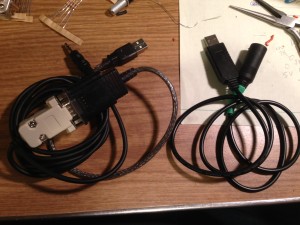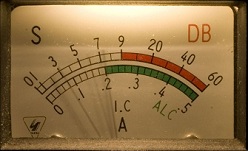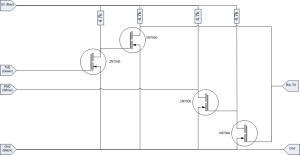I previously added (as “comments” to my post on RS-232 to TTL cable) the fact that I had purchased some USB to TTL converters, intending to remove the middle man (RS-232) – and hopefully lighten my programming kit a little. The challenge to using these cables is that most radios use a single bi-directional line for programming, and the cables I bought have separate RX and TX lines – and can’t just be tied together.
The solution is fairly simple – a combiner circuit. This circuit is basically a pair of FET buffers with the output of one and input of the other connected as the radio port, and the RXD and TXD lines from the computer connected to the “uncombined” lines.
The Schematic:
Note that all FETs are 2N7000 N channel FETs, and all 4 resistors are 4.7k ohm resistors.
The first version worked OK – it was ugly, but I could read and write to an Icom 2100. Then I broke one of the FET leads off due to bending it…. another trip to Gateway. At this point, i wanted to clean up the overall connector – remember, I was trying to REDUCE volume, so a big project box in the cable wouldn’t work. I decided that I wanted to build the entire thing into a 5 pin DIN shell. This would allow the 5 pins to be 5VDC, Programming, Ground, RxD, and TxD – making the output very flexible. I could then easily make an adapter from DIN to whatever I needed.
I was much more careful with version 2, and I did manage to fit the circuit above into a 5 pin DIN shell – a bit uncomfortably (cable clamp isn’t able to clamp to cable), but it works.
Next, I have obtained some double sided PCB, and surface mount components – I want to see if i can further reduce volume and make it fit better in the DIN connector.
Here’s what I ended up with, compared to what I was using before:
while the new cable is slightly shorter, it does not contain the 2 DB9 hoods, which significantly reduces volume of the overall system.
the SMD version should be exciting…

